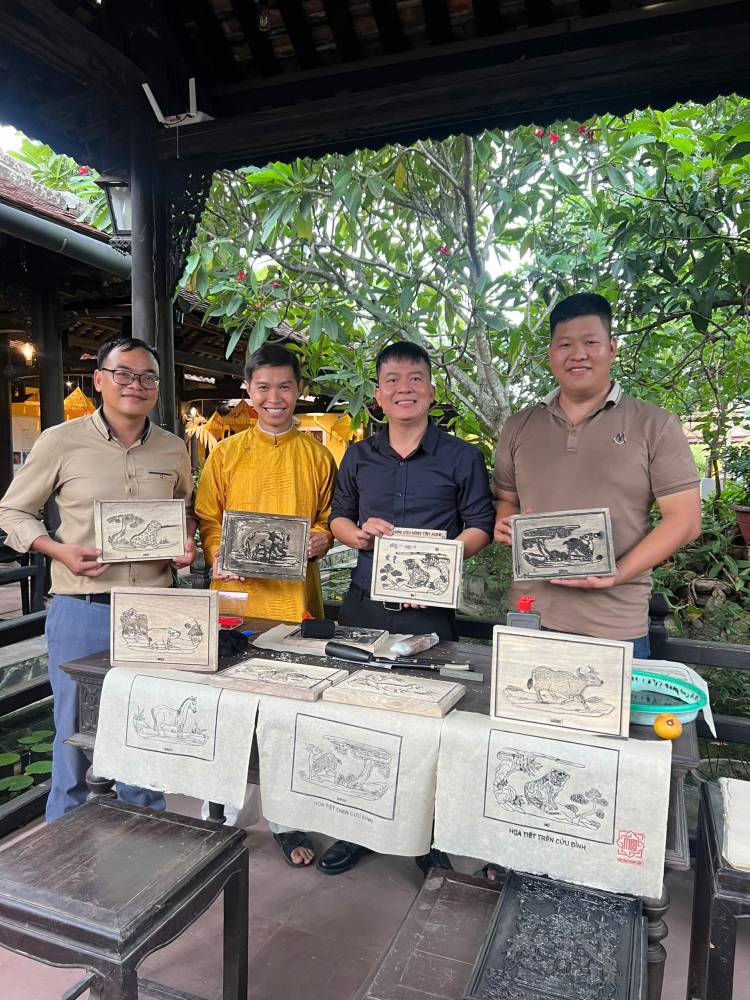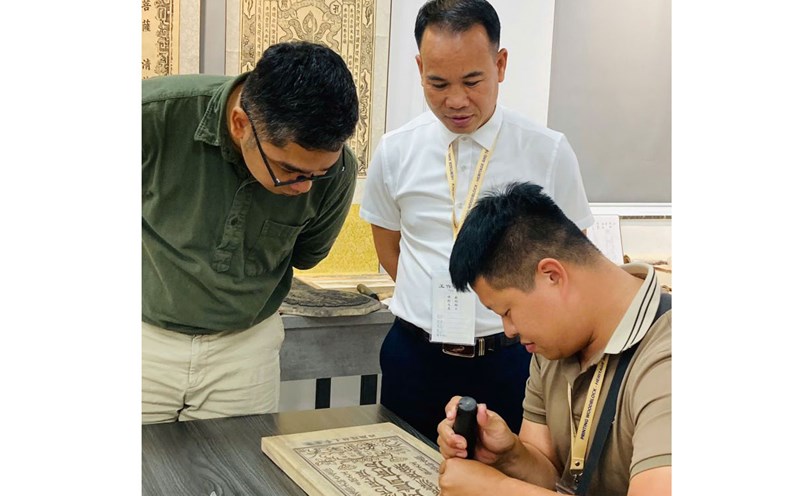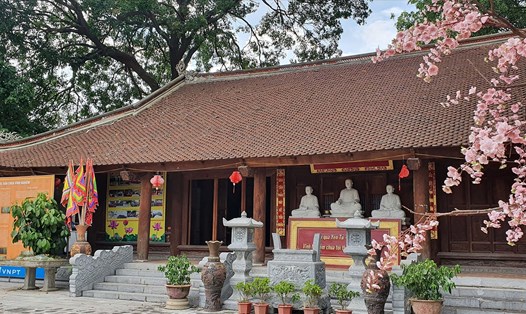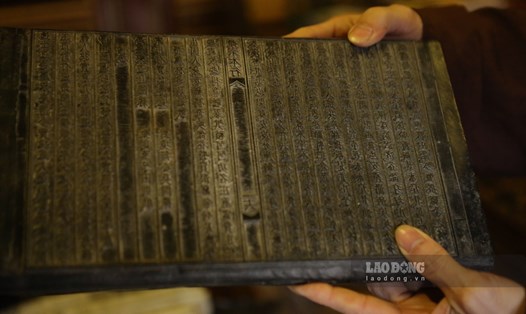Fate comes to the profession
Nguyen Cong Dat's childhood was associated with the quiet days of watching the last artisans of Thanh Lieu village diligently carve markings, carve paintings, and carve.
From a young age, I was attracted to the phoenix dragons and the sharp Chinese characters on each piece of wood. Although the profession has passed away, that memory urges me to learn and return to the heritage of my hometown" - Mr. Dat shared.
After studying interior and exterior design at the Open University, Mr. Dat decided to embark on a path that few young people of his time dared to choose: Restoring carpentry. The first step was to learn the history of Luong Nhu Hoc's craft village by yourself. At the Temple of Literature, Quoc Tu Giam clearly recorded the person as Luong Nhu Hoc, who is Tuong Phuoc Hong Chau, a resident of Hong Luc village, Truong Tan district, Ha Hong prefecture (now Thanh Lieu area, Tan Hung ward, Hai Phong city).
During his college years, he always improved his knowledge of Han Nom and then diligently practiced carving each small stamp to introduce to his friends: My village has a unique craft, which is carpentry.

Banana trees - the quintessence of the Vietnamese ethnic group
Up to now, he has been involved in carving carpentry for more than 15 years, successfully completing nearly 30 elaborate stages: From wood selection, soaking, cutting board, leveling, compiling documents, to the stage of carving inks, carving letters, carving paintings and printing. In particular, the pine wood must be white, smooth, flexible, less warped and have a very even absorption of squid. Normally, after being sawed, the wood will have to be soaked for 3 - 6 months to remove the plastic, then dry, and flatten the plank. The thickness of a carving is usually from 2.5 to 3cm, while the panel size can be 25 - 35cm wide depending on the purpose of carving or printing books.
After processing the wood, the most important step is to compile and select the content. Under feudal times, this was often assigned by the National History Office, pagodas or ward secretaries, because every document put on the relief must be accurate, with beautiful and solemn writing. The craftsman will use a pen to draw the Chinese characters in the form of a letter, a note or a story with sophisticated illustrations. This text is printed with ink on Do paper, then pasted on a wooden board made of finely ground rice. When the paper is peeled off, the ink will be printed on the wood surface - that is the "manhole" for the craftsman to start carving.
Thanh Lieu's engraving tools are special in that they do not use cross- knives like in China, Japan, or Korea, but use cross- knives - a type of knife created by the Luong Nhu Hoc craft group. The knife is blacksmithed from wind steel, finely sharpened edges, rolled with a round buffalo horn, allowing carving extremely small lines, even the Chinese characters, with up to 25 - 30 or small lines like beans.
"A word must have hundreds of blades vertically, left and right, above and below to be completed. The craftsman must engrave the words like meditation to maintain the composure and sharpness of each feature" - Mr. Dat explained.
When the board is finished, the craftsman will print it for testing. If there is a mistake, they have to do the technique of applying lettering and patching, cutting the wood and inserting it into the damaged areas, carving and adding without using glue. This is one of the secrets to help Vietnamese b fans last and be sharp for hundreds of years.
The final step is printing and closing the book. The craftsman used ship'sink, Do paper and squid to print. The printing sheets are arranged in volumes, squeezed, sliced and then stacked with coil and paper, painted to make the bookshelf stronger. The remaining three sides are bordered with lipstick, which is both durable and beautiful. Thanks to that, the carpets carved from the 16th and 17th centuries are still intact and can continue to be used.
The more wood from the pine wood material is printed, the more durable it is. The life of a sculpture can be up to 300 - 500 years. Therefore, from Vinh Nghiem Pagoda, Bo Da Pagoda to the Nguyen Dynasty's timber warehouse and tens of thousands of reliefs still exist and become a world heritage, proving the skillful hands of Vietnamese artisans.

Hoai bao spreads forest in Thanh Lieu village
If fate brought Mr. Dat to the profession as a curiosity and love of his youth, the motivation for him to persevere lay in the aspiration: Preserving and bringing the trees to contemporary life.
I think if the younger generation does not join hands, one day the profession will be lost forever. The original is a core part of Vietnamese culture, and our responsibility is to continue that story with today's breath" - Mr. Dat expressed.
In recent years, he has not only worked tirelessly to restore the lost ancient planks, but has also created many new works. Mr. Dat also attended an international conference on carpentry in Korea, bringing the story of Vietnamese heritage to friends around the world.
His vision does not stop at preserving ancient techniques. Dat wants to turn indigenous trees into cultural experiences for the community, especially young people. Small classes in the village, printing practice sessions for students are the way he sows the seeds of the love of heritage.
Further, Mr. Dat also plans to build a center for the conservation of woodblock printing right in Thanh Lieu. It will be both a living museum and an experience space for domestic and international tourists to learn, try out and bring works associated with Vietnamese heritage. From the Turtle Tower, Khue Van Cac in Hanoi, to Hoi An ancient town, My Son shrine, or Trang Tien bridge in Hue, all can become unique carpentry paintings, so that every tourist leaving Vietnam can carry a piece of cultural soul in hand.
What Mr. Dat hopes for is not only to affirm the value of a craft village, but also to arouse national pride. As Mr. Dat said: A country is only truly strong when it knows how to preserve and promote heritage. I want the original woodwork to not only be a memory, but a story to continue told".










